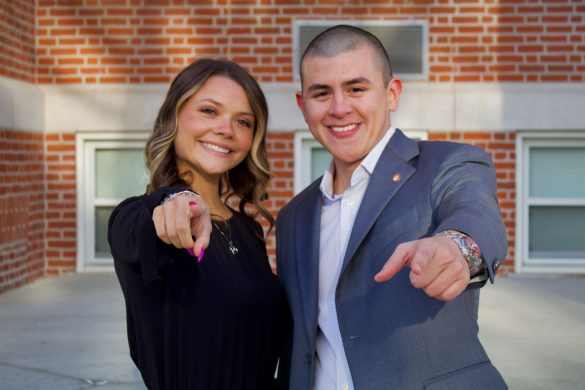The Food and Drug Administration (FDA) issued an emergency use authorization for a combination of Bamlanivimab and Etesevimab, a new prophylaxis drug for COVID-19 developed by Eli Lilly & Co, on Feb. 11, according to the FDA website. This drug, known as a monoclonal antibody treatment, is an alternate treatment for COVID-19, and while not being the first of its kind, it is one of the first that is resistant to its variants, such as Delta and Omicron, Assistant Professor of Public Health Kara Cecil said.
According to the drug’s fact sheet, the pairing of the drugs can work as a treatment for mild symptoms, as well as post-exposure prophylaxis, or treatment, for those that are either not fully vaccinated, immunocompromised or otherwise at high-risk from COVID-19. Cecil said that one of the most important things that come into play when addressing if you should take the Eli Lilly-produced drug is your risk factors and making sure you understand those.
“In terms of chronic diseases, that will impact a lot of this audience. Heart disease is going to be rather low in this audience, but obesity and smoking behaviors is the other thing, and those are modifiable health behaviors,” Cecil said. “So if someone is concerned about their risk for severe disease, of any shape or form, COVID[-19] or otherwise, those are modifiable health behaviors. So there’s something you can do about that to decrease your risk of severe disease.”
The drug is still going through trials as of Reflector press time, and the fact sheet states that there is still limited information about the safety or effectiveness of the drug pairing. Cecil said the emergency use authorization process is a lengthy one and goes through several steps before being given approval.
“If the testing of the new drug is consistently looking positive . . . and there’s a significant benefit to getting that drug to market, they can issue an emergency use authorization,” Cecil said. “And that is a temporary authorization to use that drug while they continue those studies until it does or does not receive final approval. Now, if the data were to come back in a surprising way that it would be causing more harm, or it wasn’t having the efficacy that initially showed, it would be pulled.”
Cecil said that drugs like this are helpful in moving away from COVID-19 infection resulting in hospitalization. The goal is not to decline the number of cases, she said, but rather to focus on making the disease less severe and more controlled, similar to influenza and the common cold.
“That’s really the measure we want to be looking at when we’re looking at the burden of disease. We never want to get to zero colds; I mean zero colds would be great, but it’s not going to happen. It’s just not realistic. But we don’t want colds killing people and putting them in the hospital. It’s the same thing happening here,” Cecil said. “. . . But the benefit of having these medications [is] to provide to someone post-exposure who was also high-risk….So if I have a COVID[-19] exposure having no other risk factors, my concerns are minimal …. So we want to prevent those high-risk individuals from developing severe diseases. That’s the goal of these.”
Cecil said the best way to see how effective drugs like Bamlanivimab and Etesevimab will be is to look at the past behaviors of disease and use those as predictors. Prior to the development of these drugs, they had monoclonal antibodies which she said is similar to sharing immunity from one person to another. Cecil said these pills are using a similar science but with a lower barrier to entry as monoclonal antibodies, which have to be injected intravenously (IV), compared to the pills seen with Bamlanivimab and Etesevimab. She said the lower supply of monoclonal antibodies paired with the cost makes these new drugs much more valuable.
“One, it takes fewer medical resources between the monoclonal antibodies and the pills; you can take it home,” Cecil said. “And two, people have genuine phobias of needles, and that comes in all shapes and sizes, and so that would include intravenous transfusion of antibodies. People will avoid getting that or put off getting that because they just simply don’t want to have a needle stuck on their arm—they don’t want to have an IV.”
The difference between these treatments and the vaccines that have been rolled out is the difference between active and passive immunization, Cecil said. The vaccines provide your body with the map for fighting the disease, but these pills are helping fight the virus before it becomes more severe within the body, she said.








